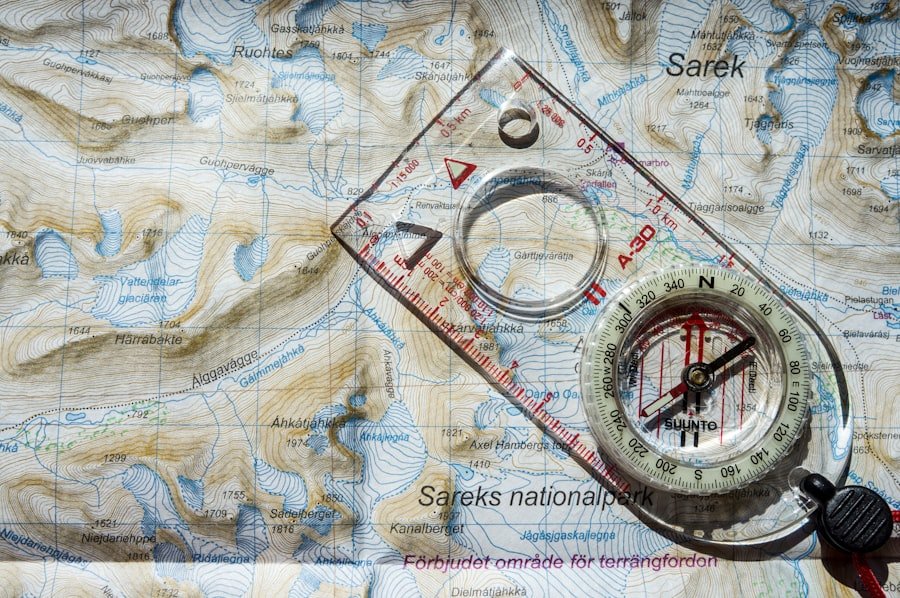Geotargeting is a sophisticated marketing strategy that leverages geographical data to tailor content, advertisements, and services to specific locations. This approach allows businesses to deliver highly relevant messages to their audience based on their physical location, enhancing the likelihood of engagement and conversion. The concept has gained traction with the rise of digital marketing, where the ability to pinpoint users’ locations through various technologies has transformed how brands interact with consumers.
By understanding the geographical context of their audience, marketers can create more personalised experiences that resonate with local cultures, preferences, and behaviours. The evolution of geotargeting can be traced back to the advent of GPS technology and the proliferation of mobile devices. As smartphones became ubiquitous, they enabled marketers to access real-time location data, allowing for more precise targeting than ever before.
This capability has opened up new avenues for businesses to connect with potential customers in a way that was previously unimaginable. For instance, a restaurant can send special offers to users who are within a certain radius, enticing them to visit. This level of specificity not only increases the relevance of marketing efforts but also fosters a sense of immediacy that can drive foot traffic and sales.
Summary
- Geotargeting is the practice of delivering different content or advertisements to a website user based on their geographic location.
- Geotargeting works by using the user’s IP address, GPS data, or other location indicators to determine their location and deliver relevant content.
- Geotargeting is important in marketing as it allows businesses to tailor their messaging and offers to specific geographic areas, increasing relevance and effectiveness.
- The benefits of geotargeting include increased engagement, higher conversion rates, and better return on investment for marketing efforts.
- Examples of geotargeting in action include localised advertisements, location-based promotions, and personalised content based on the user’s location.
How Geotargeting Works
Geotargeting operates through a combination of technologies and data sources that identify a user’s location. The most common method involves the use of GPS data from mobile devices, which provides precise coordinates that can be used to determine a user’s whereabouts. Additionally, IP address geolocation is another prevalent technique, where the user’s internet connection is mapped to a geographical location.
This method is particularly useful for desktop users or those who may not have location services enabled on their mobile devices. Once a user’s location is established, marketers can segment their audience based on various geographical parameters such as country, region, city, or even specific neighbourhoods. This segmentation allows for the creation of targeted campaigns that speak directly to the needs and interests of consumers in those areas.
For example, a clothing retailer might promote winter apparel in colder regions while showcasing summer collections in warmer climates. Furthermore, geotargeting can be enhanced by integrating demographic data, enabling brands to refine their messaging even further by considering factors such as age, gender, and income level.
Importance of Geotargeting in Marketing

The significance of geotargeting in marketing cannot be overstated. In an era where consumers are inundated with information and advertisements, the ability to deliver relevant content based on location is crucial for capturing attention and driving engagement. Geotargeting allows brands to cut through the noise by ensuring that their messages are not only timely but also contextually appropriate.
This relevance is particularly important in local marketing efforts, where consumers are often looking for products and services that cater to their immediate needs. Moreover, geotargeting enhances the overall customer experience by providing personalised interactions that resonate with users on a deeper level. When consumers receive offers or information that align with their geographical context, they are more likely to perceive the brand as attentive and responsive to their needs.
This perception can foster brand loyalty and encourage repeat business. Additionally, businesses that utilise geotargeting effectively can gain a competitive edge by differentiating themselves from competitors who may not be leveraging this technology.
Benefits of Geotargeting
The benefits of geotargeting extend beyond mere relevance; they encompass improved return on investment (ROI) and enhanced customer insights. By targeting specific geographical areas, businesses can allocate their marketing resources more efficiently, focusing on regions with the highest potential for conversion. This targeted approach reduces wastage associated with broad-spectrum advertising campaigns that may not resonate with all audiences.
For instance, a local coffee shop can invest in ads that specifically target nearby residents rather than casting a wide net across an entire city. In addition to cost efficiency, geotargeting provides valuable data that can inform future marketing strategies. By analysing consumer behaviour in different locations, businesses can identify trends and preferences that may vary from one area to another.
This insight allows for continuous optimisation of marketing efforts, ensuring that campaigns remain relevant and effective over time. Furthermore, geotargeting can facilitate A/B testing of different messages or offers in various locations, enabling brands to refine their approach based on real-time feedback.
Examples of Geotargeting in Action
Numerous brands have successfully implemented geotargeting strategies to enhance their marketing efforts. One notable example is Starbucks, which utilises geotargeting to send personalised promotions to customers through its mobile app. When users are within a certain distance from a Starbucks location, they receive notifications about special offers or new products available at that specific store.
This strategy not only drives foot traffic but also encourages app engagement, creating a seamless connection between digital marketing and in-store experiences. Another compelling case is that of local retailers who leverage geotargeting through social media platforms like Facebook and Instagram. These platforms allow businesses to create location-based ads that target users within specific geographic boundaries.
For instance, a boutique clothing store might run an ad campaign targeting users within a five-mile radius, promoting an exclusive sale event. By reaching potential customers who are geographically close, the store increases the likelihood of attracting foot traffic and boosting sales during the event.
Challenges of Geotargeting

Despite its numerous advantages, geotargeting is not without its challenges. One significant hurdle is the issue of privacy and data protection. As consumers become increasingly aware of how their data is being used, there is growing concern over privacy violations and the potential misuse of location data.
Marketers must navigate these concerns carefully by ensuring transparency in their data collection practices and adhering to regulations such as the General Data Protection Regulation (GDPR) in Europe. Another challenge lies in the accuracy of location data itself. While GPS technology is generally reliable, there are instances where inaccuracies can occur due to factors such as poor signal strength or device settings.
Additionally, users may disable location services on their devices or use VPNs that mask their true location, complicating efforts to deliver precise geotargeted content. Marketers must therefore employ a multi-faceted approach that combines various data sources and techniques to enhance the accuracy of their geotargeting efforts.
Best Practices for Geotargeting
To maximise the effectiveness of geotargeting campaigns, marketers should adhere to several best practices. First and foremost, it is essential to segment audiences based on relevant geographical criteria while also considering demographic factors. This dual approach ensures that marketing messages resonate with both the location and characteristics of the target audience.
For example, a fitness centre might tailor its messaging differently for urban dwellers compared to those in suburban areas. Additionally, marketers should focus on delivering timely and contextually relevant content. This means not only considering the geographical context but also aligning messages with local events or seasonal trends.
For instance, a retailer could promote back-to-school sales in late summer while highlighting holiday promotions as winter approaches. Furthermore, utilising A/B testing can help identify which messages perform best in specific locations, allowing for continuous optimisation of campaigns.
Future of Geotargeting
The future of geotargeting appears promising as advancements in technology continue to evolve. The integration of artificial intelligence (AI) and machine learning into geotargeting strategies will likely enhance the ability to analyse vast amounts of data quickly and accurately. These technologies can help marketers predict consumer behaviour based on historical data and current trends, allowing for even more precise targeting.
Moreover, as augmented reality (AR) and virtual reality (VR) technologies gain traction, they may offer new avenues for geotargeting applications. For instance, retailers could create immersive shopping experiences that guide consumers through physical stores based on their location within the space. This innovative approach could revolutionise how brands engage with customers in real-time while providing tailored recommendations based on individual preferences.
As consumer expectations continue to evolve towards more personalised experiences, businesses that embrace geotargeting will be well-positioned to meet these demands effectively. The ability to deliver relevant content at the right time and place will remain a critical component of successful marketing strategies in an increasingly competitive landscape.
Geotargeting is a powerful marketing tool that allows businesses to tailor their advertising efforts to specific locations. This strategy can help companies reach their target audience more effectively and increase their chances of success. In a related article on managing stock to meet customer needs, businesses can learn how to optimise their inventory management to better serve their customers. By combining geotargeting with effective stock management, companies can enhance their overall marketing strategy and improve their bottom line.
